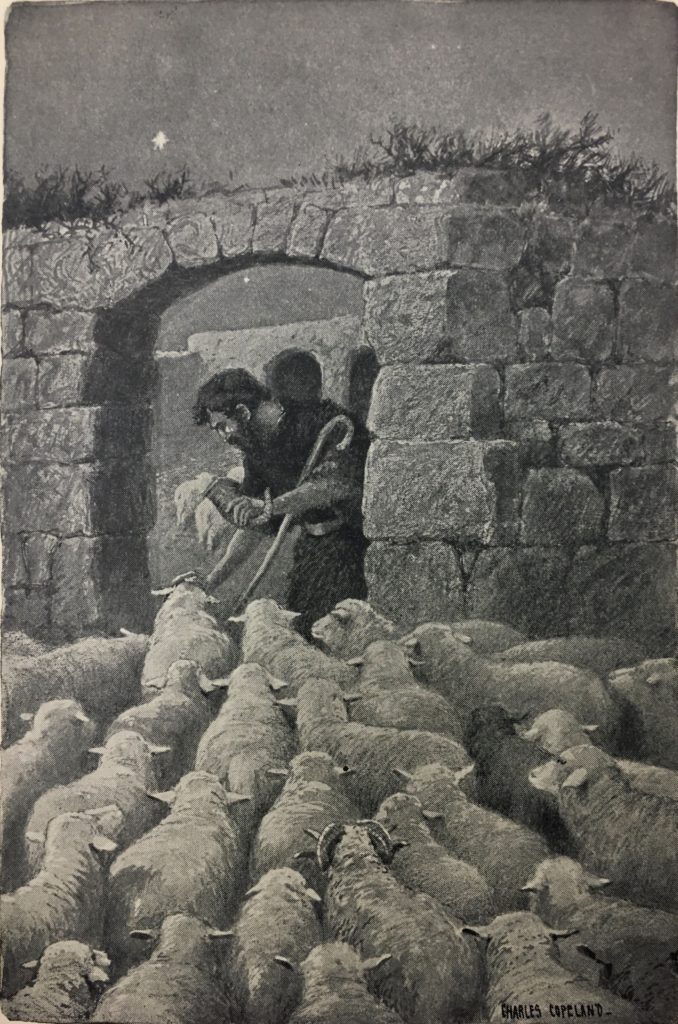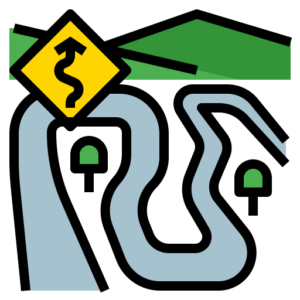
“I will make you pass under the rod, and I will bring you into the bond of the covenant” (Ezekiel 20:37).
These beautiful words of the Lord hover in the air as a promise to His people. The Shepherd God would be the Judge over all Creation. And He would be the Shepherd to watch over His Chosen Flock.
To “pass under the rod” does not have the same connotation as it may in modern times as “passing under the rod” is not an act of punishment or war.
Despite the perceived simplicity of the Shepherd’s life, they did have their “tools of the trade.” The shepherd’s arsenal included his iconic staff and his clothing, the abayah – his robe, to protect him from the elements. In the shepherd’s bag could be found a horn of oil to salve the wounds of the Flock, and perhaps a sling, and some stones. Of course, he would use the sheepfold as nocturnal quarters for the Flock, and at his side – the rod, for protection and as a counting apparatus.
Yes, besides the element of weaponry, there is another, less “ferocious” aspect to this rod; the shepherd would turn it around, holding it by the “ball” end, and employ it as a “counting” tool. As he would stand at the gate the sheep would pass by, one by one, before their inspector; each one passing under the rod. “Sheep by sheep passes in review before the Good Shepherd – He knows all their cases, their circumstances, their trials, – their sorrows, their joys” (MacDuff 1866). In a pseudo rhythmical fashion, like a ticking clock measuring the admittance of each one entering, each one would pass under it and into the sheepfold, and the tally would be taken.
Christ would appropriate this shepherd imagery to Himself in John 10:9, “I am the door; if anyone enters through Me, he will be saved, and will go in and out and find pasture.”
Christ speaks of the gate, the door of entry, through which each must pass to come into His sheepfold: The Church. “The Door” references the person and work of Christ, and the obedience of the sheep. One by one, they enter, next to the Good Shepherd, inspected, and under the rod. A gentle tap on the back of each is the assurance that they have been duly counted among the Flock as if to say, “This one I have purchased.” And, “This one is mine.” And, “This one is under my care.” “Good to see you, friend.” “Come right in.” “You are safe; rest easy.”
All who have entered were lost. All who were brought into this sacred enclosure were undeservedly chosen. Yet now, grace has them covered. “For you were continually straying like sheep, but now you have returned to the Shepherd and Guardian of your souls” (2 Peter 2:25).
“I am the good shepherd, and I know My own and My own know Me” (John 10:14). The Shepherd Lord knows the Sheep; He inspects to see if any are limping or in need of special care. The Shepherd Lord knows the number… if any are missing – if any lost sheep need to be collected.
The rod also represents authority, as does a scepter. In this respect, the rod was a symbol – an affirmation of the Shepherd’s ownership of the flock. In passing each sheep affirms the shepherd’s authority and ownership. “The Lord is my Shepherd.” “The Lord is my Shepherd.” “The Lord is my Shepherd.”
The antiphonal anthem sung at sunset:
“The Lord is my shepherd.”
“This one is mine.”
“The Lord is my shepherd.”
“You are safe; rest easy.”
“The Lord is my shepherd.”
“Come in, little one.”
“The Lord is my shepherd.”
“So good to see you, friend.”
“The Lord is my Shepherd.”
“You are counted!”
What greater joy is found than to be counted among the Flock of God, the redeemed!
What greater confession have I than “The Lord is my Shepherd!”
What greater affirmation is there than to be counted by the Lord as one of His own!







Thanks for these wise words